After a morning working on the recovery of the lost laundry (lost to rain yesterday), and luggage planification for the upcoming trip, we head through the Shinjuku Waseda neighborhood. The aim is to get to the traditional Tempura restaurant that Noe has talked about for ages. We get there in time to have a nice table, the service is great, the Tempura and Sashimi are fantastic. We are so glad to have been able to join Noe once at that place! We then go on walking around the neighborhood, first entering a craft shop (not craft beer, craft…), then, while escorting Noe back towards Waseda, discovering a few pleasant little local shrines. Noe then goes towards her office, the rest of us take the subway towards Akasaka. We have a number of objectives. The first one is reached upon exiting Nagatacho subway station: we admire the site of the old Atasaka gate, then arrive to the statue entitled White Deer, by Kohei Nawa. The title is faithful to the object, and the surroundings are nice.
We then start walking towards objective number 2, but are stopped by some rufous. We see a number of people ready with cameras and videos, and a number of policemen hanging around the big avenue. A car cortège goes out of what we have to check to learn is the official house of the President of the House of Councilors. Further checks online let us know we have just witnessed Nancy Pelosi getting out of a meeting. We continue to the Hie shrine, objective number two. After passing a big Torii, we go up a path of smaller tori, and reach a pleasant area. It is a Kamakura era shrine that has charming sculptures and nice trees.
Next we walk towards Toranomon Hills, where we see a sculpture that reminds us of Ogijima. It is by the same artist who made the visiting center/sculpture on the island, Jaume Plensa. It is called Roots, it is an imposing sculpture of a figure seemingly thinking. According to the Mori site, “The sculpture expresses the universal nature of global culture and the bonds that tie humanity together, and also the vision of new culture and lifestyles, taking root around Toranomon Hills, to give life to new ideas and innovation for the revitalization of the Toranomon area.”
From there we move towards Atago shrine through the towers and the patios. We get to the Atago shrine by the back. It is a famous, central shrine. It is a quiet place, with a carp pond, some statues, various building, and even a café. As history has it, the shogun Tokugawa Ieyasu ordered the shrine built in 1603 atop Atago Hill to protect the newly-minted capital of Edo (present day Tokyo) from fire and disasters. Stairs were built, and climbing them is supposed to help you have a successful career. The ritual today has its roots from a young nameless samurai who dared to ride his horse up the hill and take some branches from the blooming plum trees at the top. He offered the branches to the Shogun, winning much praise and admiration as a skilled rider. Since we came from the back, we decide to climb down and back up, hoping this will only yield more success! Eyquem even goes back halfway down, then back up, to study some interesting column of ants.
It is still not 4pm, we will have time for a bonus objective. We walk a little while, climb more steps, and visit the Reiyukai Shakaden Temple. This is a more modern Buddhist temple, from an order founded in 1919. It is, currently, in the middle of multiple high-rise building sites. In fact, most of our walk this afternoon has made us pass next to construction sites, clearly this part of Tokyo is going to look very different, with many more skyscrapers, soon. On the site there is a big pyramid-like building, as well as a bunch of other, more regular looking, temples. We learn from the pamphlets that Reiyukai Shakaden is a “Japanese Buddhist new religious movement founded in 1919 by Kakutaro Kubo (1892-1944) and Kimi Kotani (1901-1971). It is a lay organization (there are no priests) inspired by Nichiren Buddhism, but not affiliated to any particular sect. Reiyukai considers itself the grandfather of lay-based new religions devoted to the Lotus Sutra and ancestor veneration.”
We then go back by metro to Shinjuku station, go do some shopping (we need an extra suitcase, among other things), then go back home. Noe joins us for apéritif, then we go for some sushi and come back to rest.
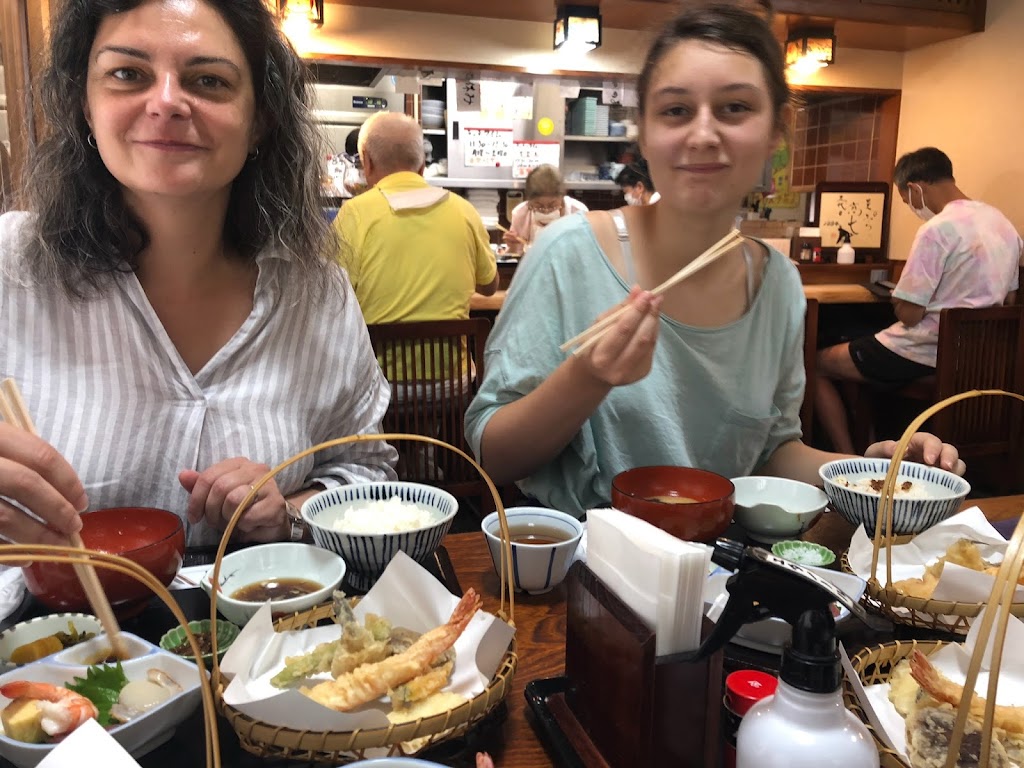



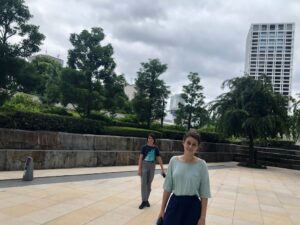
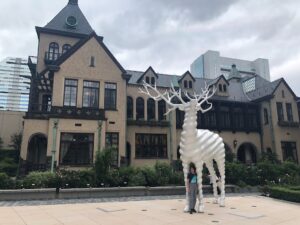
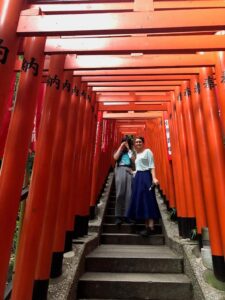
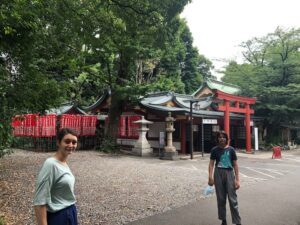

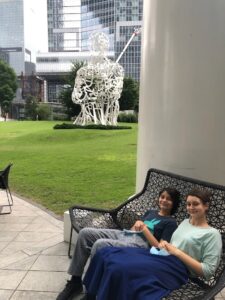
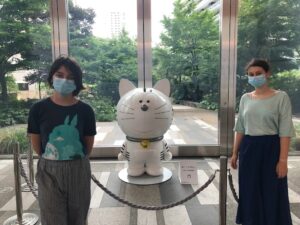
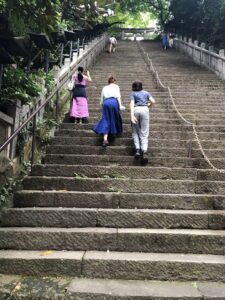
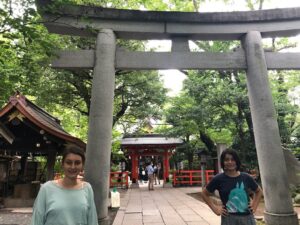
Leave a Reply